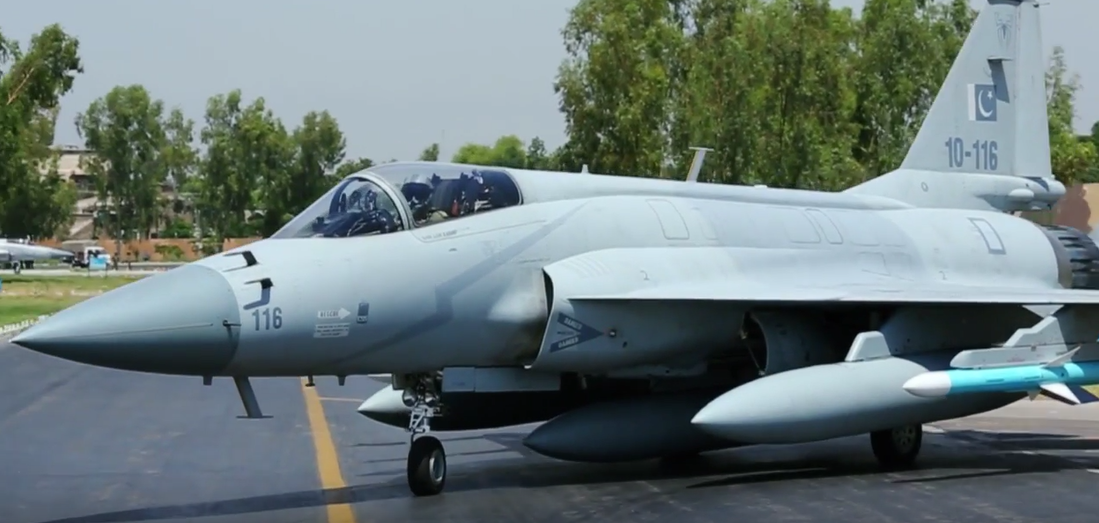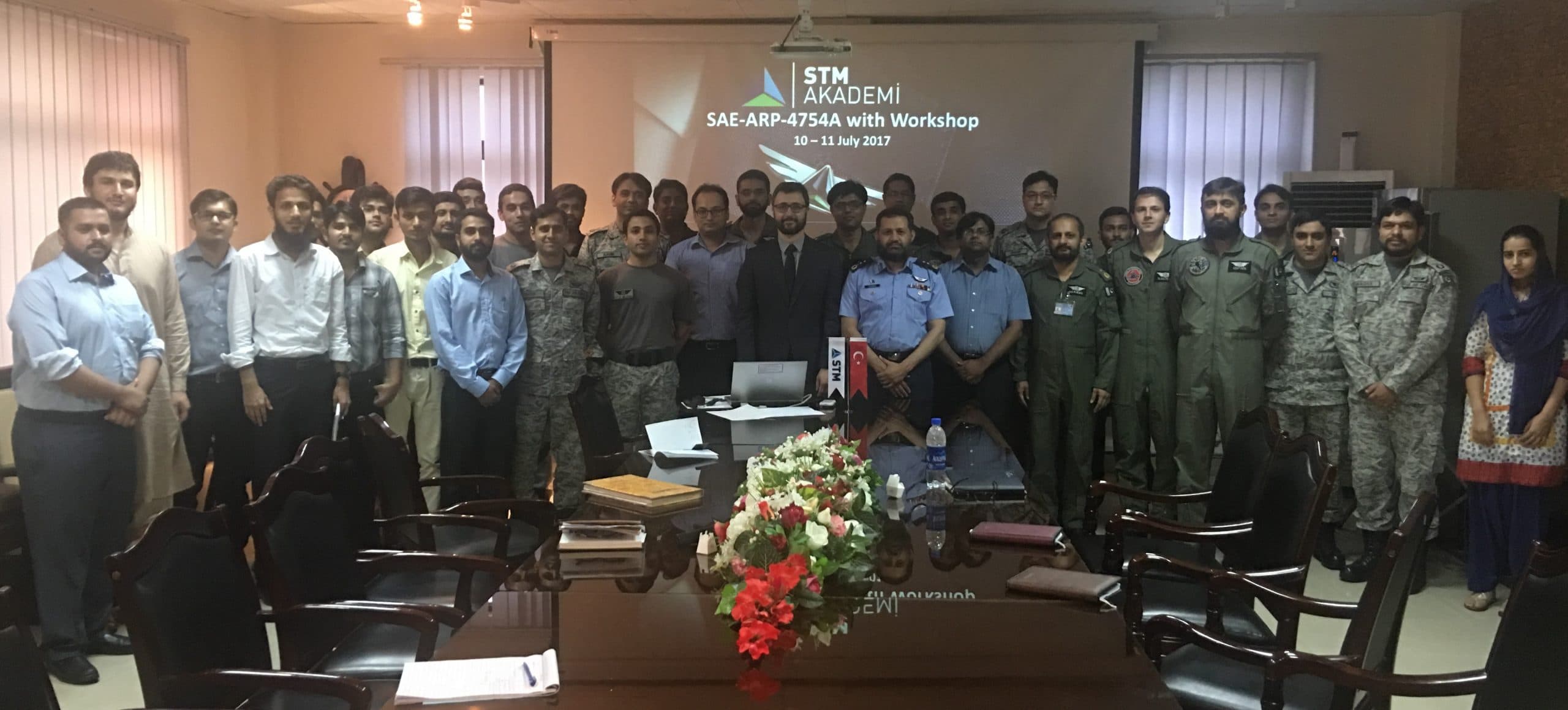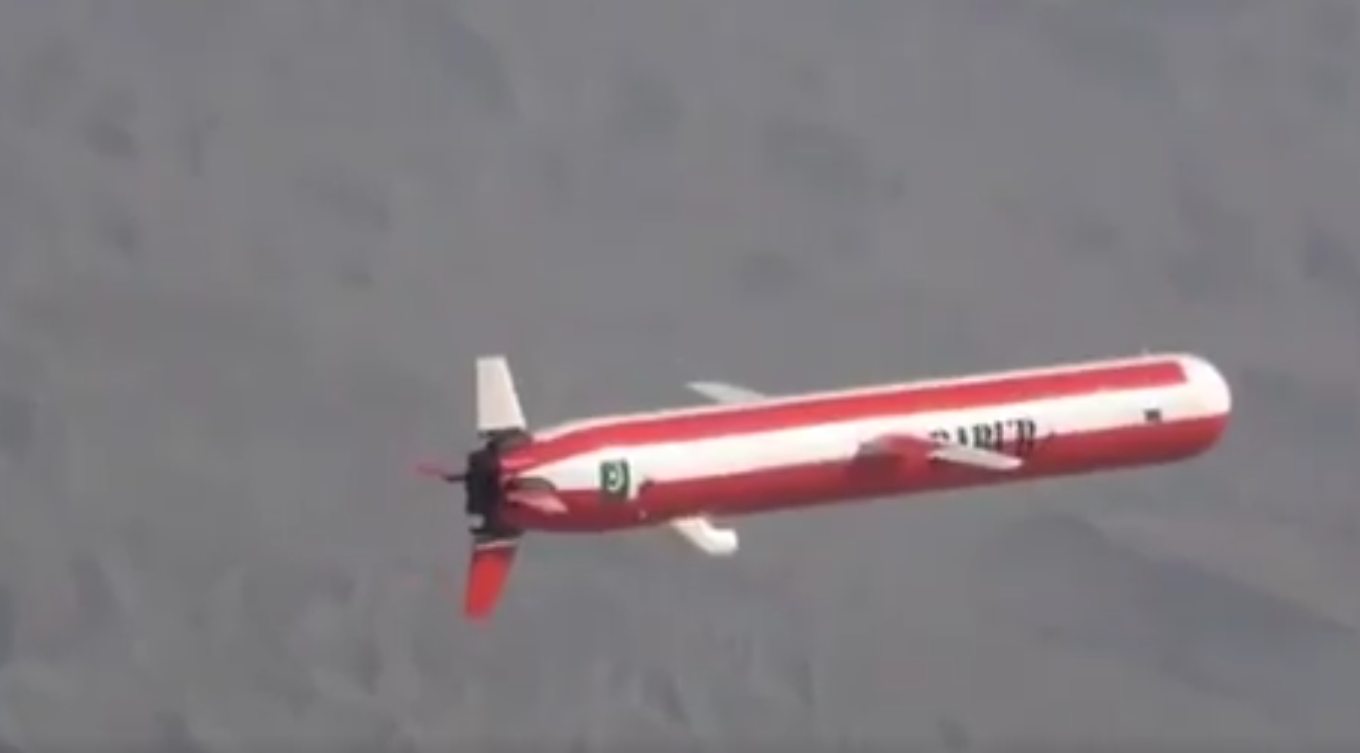2507Views 19Comments

Pakistan raises defence budget to $8.2 billion U.S.
Last week, the Government of Pakistan announced that it would increase the country’s defence budget by 11% for the 2016-2017 fiscal year – raising the budget to PKR 860 billion (or $8.2 billion U.S.).
According to Dawn News, the budget will be divided in the following manner: $3.12 billion will go sustain the salaries of personnel; $1 billion towards the maintenance of buildings; $2.06 billion will be used for operational expenses; and $2.02 billion towards arms and ammunition procurement.
As per the Business Standard, the Army will receive 47% of the budget, the Air Force will be given 20%, and Navy will receive 10%. Note, it is not clear how procurements will be allocated, it could be that the Air Force and Navy will receive the lion’s share considering that they have big-ticket items in the pipeline.
Military pensions, the nuclear program, and the cost of the operations in the Federally Administered Tribal Areas (FATA) are not part of the budget, they are allocated for separately.
Comment and Analysis
Given that the defence budget does not encompass all national security expenses in that it does not include the funds necessary to maintain the nuclear weapons program or operations in FATA), Pakistan’s military spending is higher than $8.2 billion U.S. At its height, Zarb-e-Azb cost the Pakistani exchequer $1.8 billion U.S. for 2014-2015; the cost for 2016-2017 will depend on the intensity of fighting as well as scale of reconstruction the Army deems necessary in FATA.
In terms of budgeted procurements, there are several major programs in progress: The Pakistan Air Force (PAF)’s JF-17 Thunder, which is gradually becoming the new mainstay fighter of the PAF fighter fleet; the Pakistan Navy may begin implementing its next generation submarine program; the Pakistan Army will begin to gear up for the induction of its new attack helicopters.
There are obviously many other acquisition programs at play as well, but these are likely the big-ticket items in the pipeline for the short and medium term. A core issue for the country’s defence strategists is to manage expenditures, particularly towards expensive imports.
Greater dependence on the domestic industry will enable the Pakistani military to take advantage of local labour and material costs, thereby saving it (and the country) money. This will be a key objective for the Ministry of Defence Production, which is aiming to indigenize and domestically source as much of the armed forces’ armament needs as possible.



19 Comments
by Quraishi
This is actually quiet stupid by the Pakistani leadership, they are following India.
Its like they have no vision or objectives of their own, since india increased theirs by 11% so did pakistan.
http://www.wsj.com/articles/india-increases-military-budget-by-11-to-nearly-40-billion-1425124095
so if tomorrow india is to terminate its defense spending altogether will Pakistan follow suit.
One simple thing:
There is no way Pakistan can keep up pace, in financial terms, either by its various foundations and direct investments, unless until the Pakistani economic system starts to generate value and lots of it.
U cannot capture value if its not been created in ur economy.
And one of the prerequisites for mass value generation is freedom to do business as and how desired. At the moment Pakistan economy is heavily gov controlled, with lack of any justice.
by Khalid Riaz
Is there a figure on how much we spend on our total defense needs, inclusive of the nuclear program and military pensions?
by rtnguy
Around 12-13 billion USD vs 58 billion for India. For India it comes to 2.5% of its GDP, for pak its nearly 4% of its GDP
by jigsaww
You have a personal conclusion on increase in defense budget by Pakistan. Keep it to yourself and try not to see the whole situation thru your little lens because that is your lens.
The realities are different.
by Quraishi
Interesting reply,
So u want to discussion here to be very narrowly focused on what u like it to be focused on?
And what is the picture that I’m not able to see can u enlighten me on that plz
Would be very interesting to me coz u claim my lens is little, quiet a surprise to hear that.
What are the realities, and how is what I said far from reality.
R u an engineer..
by Abdul Rashid
Hi Quraishi. It does not seem too unreasonable to expect Pakistan’s defence budget to be adjusted to some extent based on what its main adversary India is doing. Or is your complaint primarily directed at Pakistan’s political leadership’s failure to address the economic problems?
by Quraishi
True , but what I meant was there needs to be strategy, something suited to the needs of Pakistan.
Not like we just copy what they r doing, if we increase by same actually suggests lack of vision and planning.
Now it may well be that it was never copied but the chance of that is very slim.
Note: adjusting ones strategy based on the enemy is different then directly copying it’s elements.
What I wrote was very clear.
I don’t really think I was complaining.
I was just saying beyond a certain level we would need lots more financial resources. This 19th century economic systems cannot sustain advance militaries with huge budgets.
It’s more about the lack of understanding of value is and should be created in an economy.
Second as I mentioned such behavior indicates to a lack of internal long term strategy.
by Abdul Rashid
To be honest, I do not know much about the political workings of Pakistan (if “workings” is the right word at all for Pakistani politics). To the best of my understanding it is the Pakistan military leadership alone that makes assessments and plans future procurements and strategy and naturally what India is doing will factor in to their thinking. Based on this it is not surprising the budget is increasing year on year.
I think it is unfair to say Pakistan is simply aping India, reacting maybe but not copying.
Regarding the economic situation, we all hope Pakistan gets a competent leadership to steer the country on to the right track. How and when this will happen is another issue.
by jigsaww
Before i answer. Answer me this. Where are you from?
by Quraishi
How will that make a difference
Is it that u treat people differently based on their race?
Infact what made you ask such a question :s
Does logic change based on race lol
Common and u think of urself as smart
how will ur answer be different if I’m from Asia vs America vs Africa vs Russia ?
by Abdul Rashid
To Quraishi & Jigsaww,
Please try to keep this conversation friendly even with disagreements. Thanks.
by Khalid Riaz
The rationale for going nuclear was to not have to match India tank for tank. But now we are facing them off missile for missile (development of tactical and submarine based nuclear weapons).
Moreover personnel expenses (active service and pensioners) are quite high. We are raising additional division for CPEC. Somehow we still need a large standing army.
This raises issues regarding efficacy of defence expenditure. Is it possible to achieve the same level of preparedness with less money? Or to achieve higher level of preparedness with same defense expenditure? Answers may not be easy but the questions are important.
by jigsaww
Why? You can go around asking people if they are engineers or not but you can’t be asked where you are from and who you are? Told you, don’t look at things from your little lens.
Anyway…i don’t think i’m going to indulge in any serious discussion with you because that would mean educating you about basic security needs of the country. Suffice it will to say that your understanding is a result of your superficial understanding of matters. If i were to ONLY ask you to justify the budget vis a vis inflation hitting the country YoY (let alone military expenditures), you’d be left dumbstruck. The fact is, it’s YOU who is fixated on thinking budget increase is in response to something. The fact on grounds are different with YoY inflation to cause increase in salaries, day to day expenditures, maintenance costs, acquisition costs, new divisions raised for CPEC, and more.
Try to focus on bringing back the 200 billion USD stowed away in foreign banks at hands of corrupt elite and you might not have to criticise any budget after that.
by jigsaww
This is not a solution. It’s called whining, vague whining because you are unable to put a hold on the corrupt elite, therefore blame it all on the defence budgets. Ok. And what miracles will you pull off by let’s say, decreasing the budget by 50% except having that money also stored in offshore bank? The problem is not budgets, the problem is corruption. You can’t even figure that out by now. A Loser will always easy talk of cutting on expenses; a winner will always think of finding problems and creating new resources.
“something suited to the needs”…yeah? What is that “something”…You want to be an intellectual. Give specific solutions.
There’s a thousand things being done wrong. Your gov is incapable of creating a strategy or foreign policy for the country. That work is done by security establishment and the only job this corrupt gov has to do is to implement that foreign policy, at which it is failing with flying colors. And then you come whining…
Try to do better here.
by Quraishi
Asking someone of their profession is so different then asking where they r from, coz anyone can be of a profession they choose, but ur race and country u cannot choose, so not as smart as u may have thought. Plus this was in my second comment, what was it in my first post that u found to be narrow focused?
Infact it’s u who would need to be educated on the security needs of a country, just coz u have nothing to say u start up with all this emotional talk.
I don’t see where does security needs come into this.
Let alone me being left dumbstruck,
Tell me how can u carry on increasing at a rate higher then your economic growth for a longer period of time. Y do u look at it in such isolation.
Y r u so taken by list of expenditures u wrote, I was talking of something completely different, it’s surprising ur thinking so smart of urself yet not able to comprehend what I’m saying.
What is it that I say that’s out of the fold of your facts of ground, y is it with people when they don’t have a logical reply they just resourt back to experience or facts on ground.
Again when did I criticize the budget, can u show me, I was more talking about the strategy, seems strategic level is too far from ur thought and thinking, ur too indulged at an operational level.
by Quraishi
Seems like ur just copy pasting recorded stuff, y r u trying so hard to put me into a category, is it coz this is how ur brain functions by categorizing people and then recorded stuff u have against them.
Think for urself, I never talked of supported any political elite, y is all ur talk so emotional, playing ur self as the underdog and me as the elite, get out of this nagging.
Which one of my point have u answered logically, y r u so irritated when I say something of logic.
U cannot even read things well, when did I blame the defense budge, just show me once, u living on perceptions.
I was never discussion any problem I was discussion strategy if u know what that is, u r too naive to come to actually solution, u just wanna say what will sell well.
Only things u repeat r most likely what u see on media or people talk to u about, what I was saying was so different.
U cannot think beyond political elite, even if all ur systems r 100 fine with no corruption, Pakistan still does not create enough value.
Infact u don’t even know what I’m talking about, i was talking of increasing the budget even more but due to ur narrow understating u were not able to pick that up.
Only a fantasy boy can suggest something on a form like this, and someone even dumber will believe him. I don’t have any details of the internal or external situation of the army, how do u even expect one to come up with a strategy without indepth knowledge of the organization.
What I gave was Infact a very specific solution, to develop an advance strategy, for u to ask what that strategy is and that too from a person on a form, well now u can judge ur intellectual level urself.
Now how can u say my gov, lol
See this is how ur brain work, can u cannot think for urself or on what I’m saying, but u have recorded answers for a person who will support the gov, so u put me as a government supporter and then start on me from ur memory, I not from the gov nor supporter lol now what do u have to say,
Try putting me on a different group against who u have been recorded lol
Do u not believe in freedom of thought?
And btw from my first post, what was it that I saw thorough narrow lens and what’s ur qualification?
by Abdul Rashid
Hi Quraishi,
I had requested both you and Jigsaww to try and keep the discussion friendly. Have as many disagreements as you want. An intense debate is all good but no personal insults to either the person you are responding to or others.
The Admin rules for comments are 1) No insults, 2) On topic, 3) Professional and constructive, 4) Comprehensible English.
Comments that break these rules are usually deleted but some fall into grey area and are subject to personal discretion of the moderators to weigh up each comment. I generally do not like to delete comments. I respect the fact that people take the time to write them. I urge all to also respect the Admin rules.
by Quraishi
No worries,
I was just defending my opinions, there’s nothing rational or logical I got from the other side.
I never thought someone would behave such on what I wrote, was quiet interesting to me.
by Salman Khan
You know, this is very rude to jump straight to saying “your little lens”. I’ve a lot of disagreements with you. I’ve identified you as a person who supports military dictators and military coups, claiming that periods of martial laws saw great stability and prosperity. I remember clearly you saying that in 2005, our economy was the strongest under Musharraf’s rule. Well, our country was going for a doom with Musharraf’s thinking as well (regarding his cooperation with US). Every military coup was always and always led by a person affectionate with the West. Take Ayub, Zia, and Musharraf. Our military establishment has fixed itself now, and they don’t involve in the country’s politics anymore (that’s why Musharraf seems so scared rn). Your perception of Pakistani politics is that it’s just pure anarchy and chaos, and only a militaristic iron hand would fix it. Well, an iron would fix it. But not the military’s hand. You keep on saying that the military was the one who always does everything: internal politics, foreign policy etc and this is obviously wrong. I’ve never heard the military criticising any party, or stating their views on foreign policy and all. I’m sure you really just want another coup by the military to fix stuff. You don’t seem to realise that although the current state is in a mess, the system which is in place now would fix it gradually. For example, our GDP and economic growth are gradually increasing and is the highest since the last decade, our IMF debts repayment also shows positive development etc. To me, those who support military coups and maniacs like Imran, are just impatient people whose nafsiyat are so done with the current state that they want a quick dose of tranquilizers. Whichever party comes to rule, would never have a magic wand to fix everything in “aik saal me! aik saal me!”.